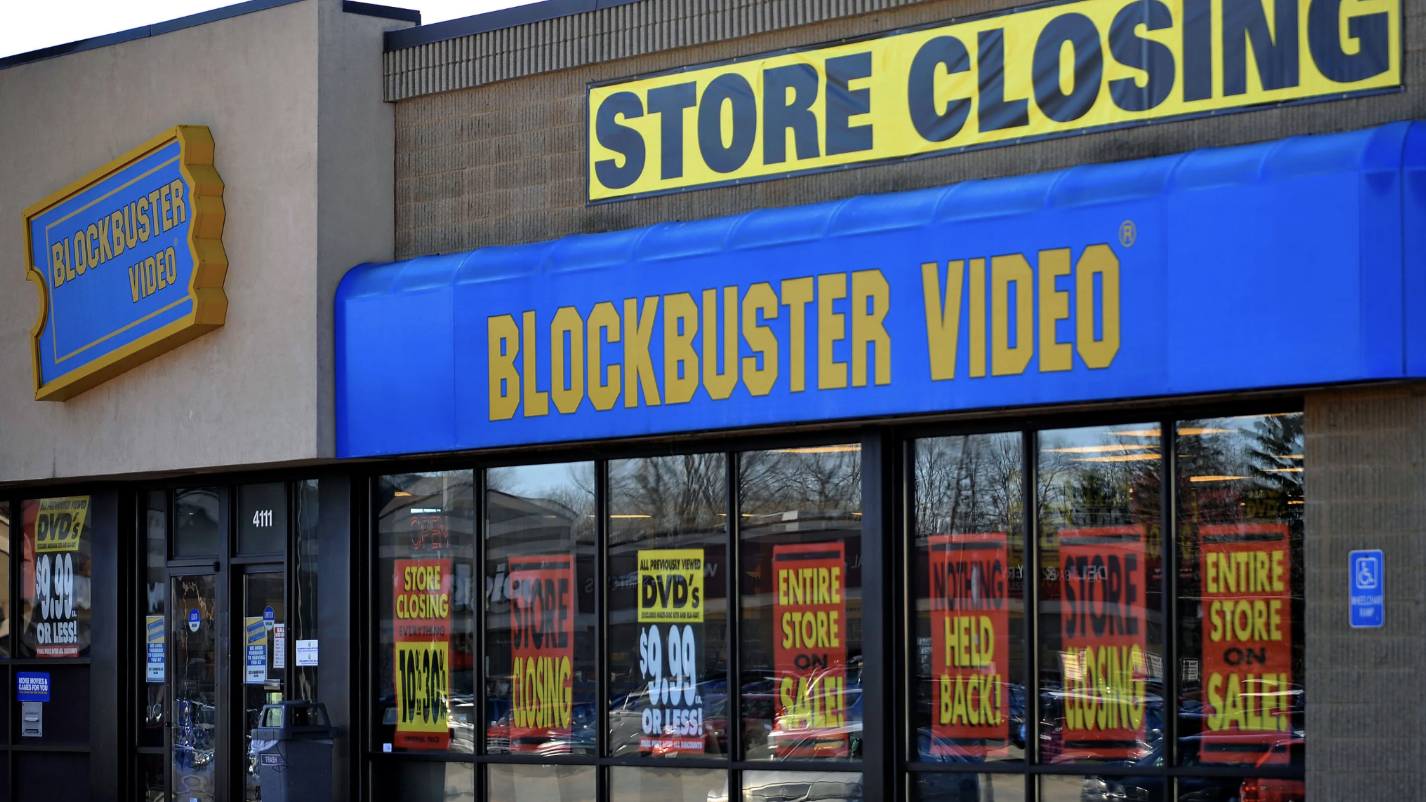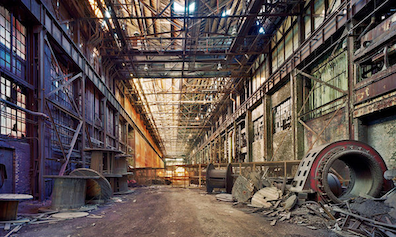When Scale Kills

THE MANTRA OF SCALE
Several years ago I was meeting with the CEO of another large game company. What I thought was a routine catch-up quickly transformed into a pitch for his (larger) company to buy Nexon. The core of his argument was “Soon there will be two types of companies in the games industry: those that are big enough to survive and those that are too small and will get crushed.”
That wasn’t a prediction, it was a threat.
Threats like that aren’t uncommon, and they often work. The gospel of scale dominates M&A discussions in public companies. Bankers love it because they collect fees. Boards love it because it sounds strategic. And most CEOs would rather be seen as aggressive acquirers than as targets. Of course getting bigger is the whole point, and questioning the logic is often treated as naive.
But in my experience running a $20 billion company, most of our biggest challenges came from our size. And the competitive products that made me most anxious or envious didn’t come from giants. They came from small teams moving fast.
Is bigger really better?
If we looked more critically at scale, we might avoid some of the industry’s most destructive decisions.
WHERE SCALE IS GOOD
Before we talk about the problems we need to examine seriously why scale can be so valuable.
Lots of Cash: Since investable cash is the lifeblood of a business, this is the obvious one. Cash buys flexibility. As CEO, I always wanted a big balance sheet — billions in cash — so I could move fast when opportunity came to us without asking for outside permission or taking on debt.
Brand: Big companies get brand benefits, in all sorts of big and small ways. People assume if you’re big, then you are successful and you must be good. Brand helps sell products. It certainly helps with recruiting. Good business opportunities come to you. As humans, we want what others want, so being at a big brand attracts people.
Economies of Scale and Scope: The more the scale the bigger the benefit.
Collectively these are massive advantages, and why Economies of Scale is the focus of so much academic research. Pioneers like John D. Rockefeller built monopolies on these forces. EA and Activision benefitted hugely from them 20 years ago.
IP Ownership: When leveraged well, a portfolio of IP can be the gift that keeps on giving. Smart large companies accumulate IP over time, which can be leveraged internally (as Games Workshop has done brilliantly) or licensed out for high fees (as Disney has done with startups eager to rent brand equity). While valuable, an often-missed point is: IP has no inherent value. It must be exploited like a call option to matter. It’s not like real estate or cash.
Network effects: Arguably the most powerful advantage of scale is the ability to capture network effects. Simply put, the more users a product has, the more valuable it becomes. Metcalfe’s law quantifies the value of a communication network as the square of the number of nodes. Classic examples include the telephone, fax machine, Windows, Facebook, and TikTok.
In games, these dynamics are everywhere. Discord and Valve operate massive network effect platforms with relatively few employees. World of Warcraft and The Finals are more fun to play because they have large and active user bases. Ad networks live or die by network effects; AppLovin has thrived on them, as Unity learned the hard way. Scale and leverage are not the same. Valve, Discord, and many online games reach massive audiences with lean teams. But network effects aren’t easily brute-forced. EA’s failed Steam competitor (known sardonically as “Vapor” internally at the time) proved that.
All of these benefits — cash, brand, economies of scale, network effects — are real. But they’re not free, meaning they are not always a net positive. As Nobel Prize winner Ronald Coase famously asked: if markets are efficient, why do firms exist at all? His answer is that they exist to reduce transaction costs – doing things in a single company can be easier and less expensive than coordinating them over a market. But when coordination costs and bureaucracy exceed what markets can do more efficiently, the whole rationale for scale breaks down.
These costs and challenges of scale in the games business are not details to be assumed away, they are tearing the industry apart.
DIS-ECONOMIES OF SCALE
To understand why scale is so problematic in games, you have to start with the core of a game publisher: development. Game development is fundamentally about people creating novel experiences, which means the textbook benefits of scale don’t translate cleanly to this industry. In particular:
Game development is not like aircraft manufacturing, which scales through machines and standardized labor systems, or Google AdWords, which can grow 10 or 100 times with almost no marginal cost.
With those attributes in mind, let’s look at the various ways scale plays out in the real world.
Structural:
Analytical:
Cultural:
Each of these challenges to scale is magnified dramatically during times of technology upheaval, like the one we’re entering now. In moments like this, advantage shifts decisively to the small, the fast, and the unafraid.
CASE STUDIES IN BLOAT
Who are the biggest agents of bloat in the videogames business? They fall into three broad categories:
I. The Game Publishing Rust Belt

Most of the largest game publishers—especially in the West—were founded over 30 years ago. Their business models were built for scale. They combined development financing, marketing, distribution, manufacturing, IP ownership, and market knowledge. At the time, their investments in new projects were relatively small.
Today, the situation is inverted. The rationale for scale has largely collapsed. Distribution is now controlled by platforms like Steam, Apple, Sony and Xbox. Manufacturing is irrelevant. And marketing, once a reliable lever, no longer delivers predictable results. Just compare the organic rise of League of Legends or Grow a Garden to the underperformance of many recent AAA titles with $100 million marketing budgets.
Development has become so expensive under current methodologies that risk reduction has become the top priority. No executive wants to be remembered for losing $200 million on a failed title. But the safer the project, the lower the odds of producing a breakout hit, the very thing that drives returns. Even as financing vehicles for internal and external development, large publishers are no longer effective.
With most of their advantages of scale now nerfed, most publishers still act as if their legacy stack works. It doesn’t. Their failure to confront this reality is exactly why the waves of layoffs keep coming. And the irony is hard to miss: the same executives and board members pushing for large acquisitions in the name of scale are the ones demanding deep headcount cuts.
II. Tourists

Over the past two decades, both Amazon and Disney correctly identified videogames as natural extensions of their consumer entertainment ecosystems. But despite dominant positions of scale and scope, both struggled to turn smart strategy into effective execution.
Amazon asked the wrong question: “How do we make a huge game?” Not: “How do we make a great game?” They poured hundreds of millions into buying studios and making smart hires. There was a real opportunity to build an online games business that reinforced the broader Prime ecosystem—but reliance on big spending to achieve rapid scale got in the way of compelling, differentiated games, much less fitting them into a larger entertainment flywheel.
Disney had a similar starting point and a clear flywheel to plug games into. But after a few failed acquisitions and costly internal experiments, Bob Iger (CEO) and Kevin Mayer (head of strategy) made a shrewd decision: game development wasn’t core to Disney’s strength. They didn’t need to build games, they could license their IP to a sea of aggressive, venture-backed studios eager to pay for brand equity. In an era of cheap capital, it was the most rational remaining move: low risk, zero headcount, high margin.
III. Foie Gras VC

As I pointed out in an earlier post, all of this should have given VCs a once-in-a-lifetime opportunity to turn the games industry upside down, and make a lot of money doing it. But with a couple major exceptions, VC entry into games has been a train wreck.
One issue is the structural mismatch between the venture capital model and the realities of videogame development, compounded by the fact that few VCs have had experience building or managing games.
But a newer and even more pernicious problem has emerged in the last few years: funding bloat. Small teams are being stuffed with far more capital than they need, from funding sources who seem to think the more money they stuff into the startups the better the quality will be later. Two recent examples illustrate the problem.
1047 Games began as a highly inspiring story of a pair of smart Stanford students who made a clever mashup of Halo and Portal. Players loved the original Splitgate, despite some rough edges and server problems common for a rookie outing. After a couple of modest venture rounds, the team received a $117 million capital infusion over two years to build a sequel around a core idea nearly identical to the original. That game launched recently, failed, and did an immediate U-Turn back into development while laying off 45 employees.
Build a Rocket Boy, led by one of the key figures behind GTA V and other Rockstar hits, raised over $300 million on an ambitious plan to make a user-generated content platform, with its first game designed to show how powerful that platform could be. That game – Mindseye – instead drew withering, broad-based scorn.
Both of these teams are highly talented. And certainly ambitious games like GTA, Cyberpunk 2077 and Battlefield show that heavy investment can help to make deeply immersive worlds. I also greenlit games that cost over $100 million but did not pan out.
The real question is whether the money invested actually creates fun. As any investor knows, correlation isn’t causation. Without a clear causal link between spending and fun, the money is wasted. And the more capital involved, the bigger the failure when it goes wrong.
IMPLICATIONS
Big isn’t inherently bad. It’s just an attribute. Sometimes it helps, sometimes it hurts.
It’s time for a fundamental re-think about how capital is deployed in the games industry, and what it’s actually meant to produce.
Implications for Big Companies
In this environment, do big companies still benefit from their size? Is size a net benefit? Increasingly, the answer is No. The remaining cohort of large publishers built industrial processes around people instead of software, and systems that demonstrably don’t scale. If success means sustainable, positive returns on investment, then many of these companies have simply become too big to succeed.
Now those same legacy giants are running headlong into AI—a shift that threatens what little advantage they have left: the unique ability to produce massive volumes of specialized content. We’ve already been seeing the cracks for years, with some of the cheapest-to-produce games (Rocket League, Rimworld, Grow A Garden, R.E.P.O) garnering more dollars and/or more hours than the most expensive-to-produce games.
But it gets worse. The common view of AI is as a cost-saving tool. But like past technology revolutions, its greatest impact will likely be a redefinition of what a game is. The old genres won’t be the new genres. And the old development processes won’t apply to the new media form. As with the GPU, the Internet, and mobile, AI will usher in entirely new types of games. And once again, the incumbents will be left scrambling.
This kind of shift requires real reorganization, not just headcount cuts. It means experimenting, retooling, and redefining how games get made. And it demands hard conversations with boards and shareholders about how to invest, take risks, fail, and try again. Well-capitalized incumbents may try to acquire their way out, but those deals rarely deliver returns for shareholders. Stockpiles of cash and brand equity won’t matter if they can’t overcome their diseconomies of scale.
Implications for Small Companies
Outside of a major technology disruption, small companies often struggle for capital, distribution, and the ability to attract top talent. Their strengths — speed, experimentation, and code over headcount — don’t fully offset those gaps. And they have to pay oligopoly rents (bad deal terms) to the major players.
But major technology shifts tilt the playing field toward small companies, especially a new generation of startups built to eliminate the old constraints and without the bloat. Now is a great time to start a game company.
Implications for Investors
And if you’re an investor, watch out. If your portfolio company is trying to innovate in the current framework, the risks are massive. If they’re not innovative, they’re stuck in a red ocean: commodity competition with a large and ballooning cost base.
Like music and film in the early 2000s — when broadband killed CDs and DVDs — there may be no good bets among the incumbents. Most of the old media giants were replaced by faster, tech-native challengers. Games may be next.
Many incumbents will pretend they can pivot, just as they did with the costly fads of VR, esports, NFT games, and streaming. Each of those burned billions in shareholder capital. Management will offer a polished vision while leaning on the one lever Wall Street rarely punishes: using cash on the balance sheet to make acquisitions. But extreme skepticism is warranted. The legacy games business is built around industrial-scale human organizations grafted onto a fundamentally creative process. Those do not pivot well.
THIS TIME IT’S EXISTENTIAL
We’re in the early stages of a massive transition—one that favors new players with new thinking. Moments like this rarely reward incumbents. The rules get rewritten during technological upheaval, and legacy scale becomes a liability, not a strength.
The next $25 billion games company will look very different from the last one. It will have 900 employees, not 9,000. And it will move with a speed and focus today’s giants can’t even imagine.